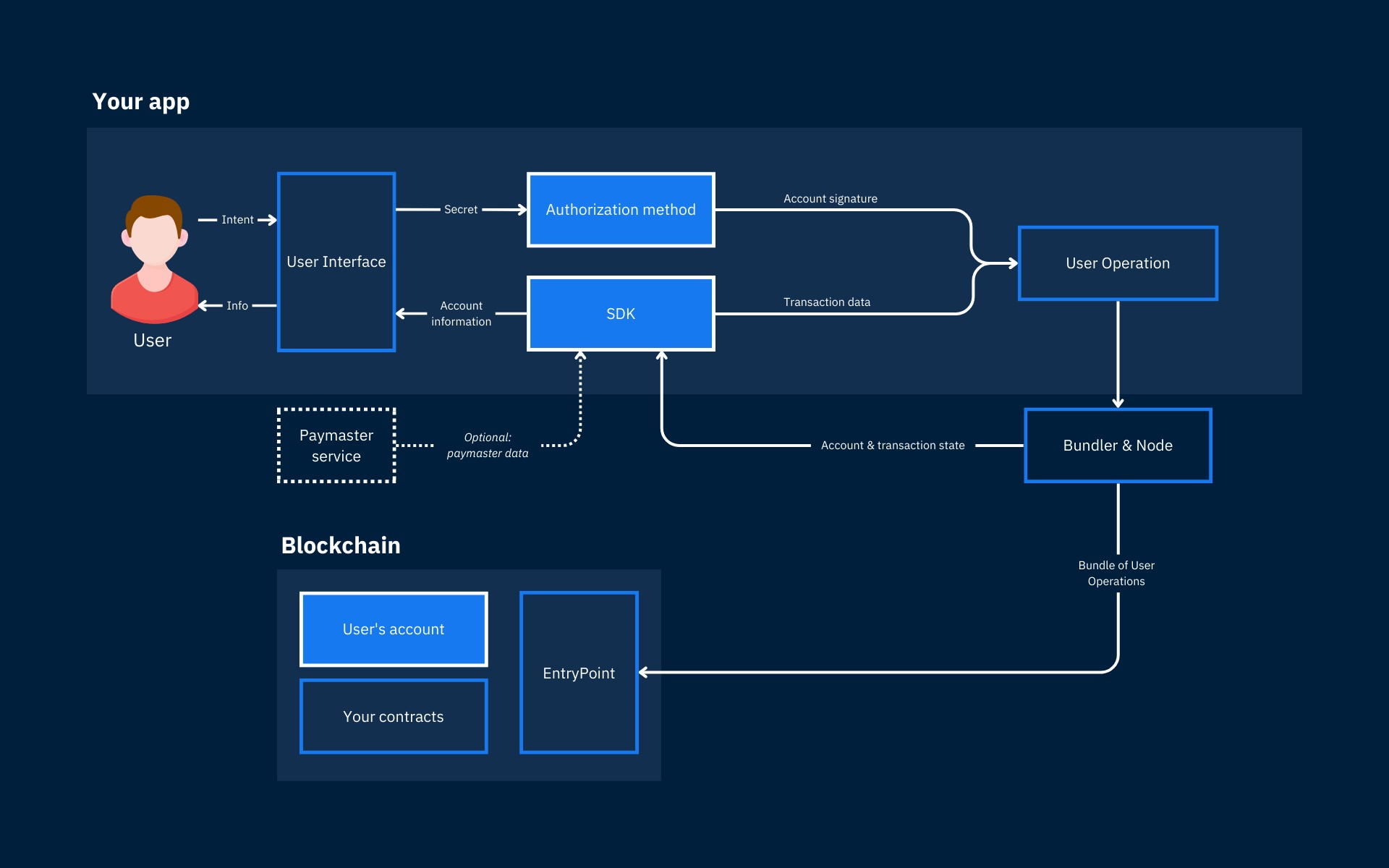Recommendations
You have a few decisions to make on how to implement ERC-4337. Here's what we usually recommend.
Although Stackup takes care of account infrastructure, you still have a number of decisions to make about which pieces you want to use if you are developing an application with ERC-4337.
These decisions can be overwhelming, so here's the advice we find ourselves giving 80% of projects.
No endorsements
We have no endorsement agreements with any third parties listed here. These are based purely off of our experience developing applications with ERC-4337, and will change with time.

High-level interactions between an application and the blockchain. Blue boxes indicate major elements you will need to choose, and dashed lines are optional.
Architectural Decisions
Most apps will need to make three major decisions: how users will authorize transactions, what account contracts to give users, and what SDK to use to build user operations.
You can see a template application that uses all of these recommendations here
Decision 1: Authorization method
We recommend using Web3Auth or similar MPC methods for basic applications. It has a plug-and-play modal that you can insert directly into your app, and users can always still connect with a traditional wallet.
More advanced authorization methods include session keys, biometrics, and device keys. You can explore some common authorization services here.
Decision 2: Smart account contracts
We recommend using ZeroDev's Kernel smart account for most applications. It is the most mature ERC-4337 Smart Account specific implementation, and includes modules for session keys and recovery methods.
It is also relatively future-proof. It is designed to comply with ERC-6900, a standard for making ERC-4337 smart accounts and their plugins interoperable.
See more options here.
Decision 3: SDK for building user operations
We recommend using userop.js rather than using an ecosystem-dependent SDK for building transactions. Userop.js is more flexible, MIT open-source licensed, and likely underpins any application-specific SDK you are using.
See more options here.
Optional: Paymasters
We recommend using a paymaster service rather than build one yourself. If you build one yourself, you need to manage on-chain liquidity.
We recommend the Stackup Paymaster, not just because we built it, but because it is the most reliable and can be used to accept ERC-20 for gas payments or to sponsor transactions outright.
Regardless, in most instances it is better to use a paymaster that approves the gasless transaction off-chain than using one that is fully on-chain. This design allows a user to do any type of transaction without needing a blockchain's native token first - i.e., a user can start with just an ERC-20 token in their account.
If you use a paymaster to sponsor transactions for your app, we strongly recommend having a separate API key just for sponsoring transactions with your paymaster so that you can put business logic for which transactions you will accept server-side.
Bonus: Reading user operation data
ERC-4337 User Operations are routed through the EntryPoint contract, so they need to be parsed differently than regular transactions. We recommend using a data API that processes this data for you. Our Data API does a lot of this parsing for you, but if you want more information you can use a service like JiffyScan.
JiffyScan's block explorer is a bit slow, but has the most features.
Updated over 1 year ago
